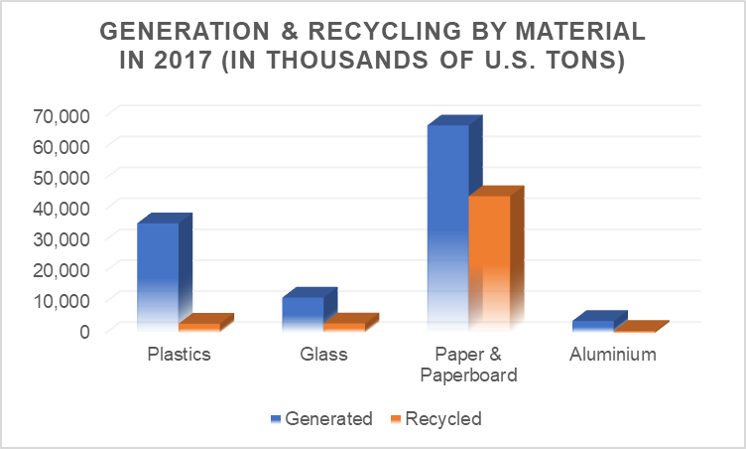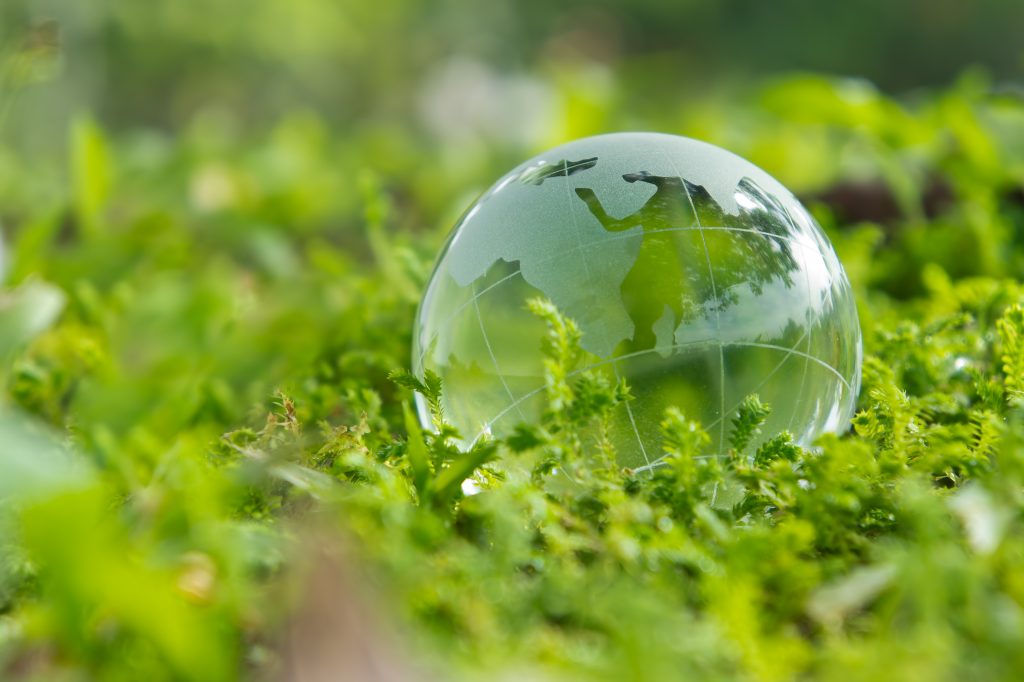
How Does Recycling Save Energy?
Why recycle? You are probably familiar with the quiet, yet nudging voice in the back of your head that goes ‘You should recycle that’ every time you throw a soda can into an all-purpose garbage bin. Recycling is like eating more vegetables or watching less TV – we all know that we should do it and yet it is very hard to break a bad habit.
However, an average American produces about 4.40 pounds of garbage per day, which adds up to astonishing three-quarters of a tonne per year – and our trash landfills are filling up. Soon enough, there might not be any more space for our trash. Unless… we recycle.
There is another benefit – recycling materials, such as paper, aluminum, plastic, and glass produces energy savings. In 2016, the recycled municipal solid waste helped save over 322,000 GWh of energy, enough to provide electricity to 30 million homes.
Conserving Earth’s Raw Materials
So how exactly recycling saves energy? We use recyclable products every day and don’t often think about the energy it takes to produce them. For example, to create paper cups, aluminum cans, plastic bottles, or glass; companies first have to extract and mine raw materials such as wood, oil, ore. These materials are then processed, transported, and refined before they reach you – the end customer – and require an immense amount of energy.
By recycling, we conserve the earth’s precious raw resources and use up to 30% less energy for processing recycled materials. The most common recyclables are aluminum, paper, glass, and plastic. Let’s take a closer look at each of them:
Four Primary Recyclables
Aluminum
Aluminum is the chief recyclable material, reducing nearly 95% of the overall material costs. In other words, aluminum can be recycled nearly indefinitely without degrading, with no need to bring any new materials into the product cycle.
Recycling one pound of aluminum (33 cans or so) saves 7 kilowatt-hours (kWh) of electricity and for each tonne, around 40 oil barrels and 14,000 kWh of energy is saved.
Glass
Producing materials from glass requires a tedious process of mixing together minerals, sand, and chemicals, heating them at very high temperatures until they melt. The final stage involves cooling the material and transporting it to manufacturers to create a finished product.
Unfortunately, the melting and cooling process has to be repeated even when using recycled material, and therefore, recycling glass is less efficient than recycling other materials. That being said, recycling one ton of glass saves 42 kilowatt-hours of energy and avoids releasing nearly 700 pounds of carbon dioxide in the atmosphere.
Paper
Recycled paper is one of the most common recycling materials in the U.S., saving thousands of trees and energy in the process. What types of paper can easily be recycled? Well, you name it… newspapers, phone books, fliers, old textbooks, computer paper, and junk mail can all be put in recycling to generate energy savings.
However, recycled paper comes with its own problems, namely the residue ink that makes it difficult to produce bight white-colored paper from reused materials. Even so, according to EPA, recycling one tonne of paper saves around 17 trees and 463 gallons of oil.
Plastic
The consumption of plastic is unfortunately steadily growing – in 2017, plastic containers and packaging were responsible for 14 million tons of waste. Unlike aluminum, plastic degrades each time it is recycled – and eventually, after about two or three cycles, it will have to make its way to the trash can.
Recycling one tonne of plastic saves 5,774 Kilowatt-hours of energy, approximately 1,000 to 2,000 gallons of gasoline and around 16 barrels of oil.
So how much aluminum, glass, paper, and plastic gets produced and how much is recycled in the U.S.? Let’s look at the data gathered by the United State Environmental Protection Agency for the year 2017:

Reduce, Reuse, Recycle
Recycling is one of those things that doesn’t require a few individuals to do it perfectly, but rather a large part of the population to do it imperfectly to make an impact. If we all make small conscious efforts to reduce, reuse, and recycle, we can make a huge impact on our communities, our environments, and our lives.
And it’s not only plastic or paper. You can recycle used electronics; donate, rather than throw away old clothes and compost leftover food. The EPA website has links to useful information and state programs that make recycling easy.
Create A Sustainable Future

According to the EPA, Americans in 2017 recycled or composted 94.2 million tons of yard waste, approximately 32.5%. Compared with only about 6% in the 1960s, America deserves a pat on the back for a job well done. However, there is still more effort to be made. Despite the government’s effort and state programs, more than 60 million plastic bottles still find their way to landfills and incinerators every day.
Recycling has the potential to be an important strategy for long-run sustainability. First, recycling enhances the health and productivity of the natural ecosystem, by preserving the earth’s virgin resources for future generations. Recycling saves energy by reducing waste in unnecessary processing and refining of products. Ultimately, it slows down the process of filling up the trash landfills, ultimately contributing to the reduction of greenhouse emissions in the atmosphere.
The importance of the above benefits for our ecosystem cannot be overstated. Each of us can make small changes to our day to day routines and be a part of the solution, rather than the problem. If you haven’t yet, start recycling and make a difference to our planet!
FAQs
Below are some answers to help you understand how does recycling save energy:
Does Recycling Really Save Energy?
Recycling materials, such as paper, aluminum, plastic, and glass produces energy savings by eliminating the need for additional pricey, labor-intensive activities of mining, extracting, processing, and transporting raw materials to create new products. In 2016, the recycled municipal solid waste helped save over 322,000 GWh of energy, enough to provide electricity to 30 million homes.
How Does Recycling Help the Earth?
Every item, made of plastic, paper, glass, or aluminum bears a cost on our mother earth, by depleting its natural resources such as oil, trees, or ores. Reusing and recycling products, rather than throwing them away into all-purpose garbage bins helps to preserve the earth’s virgin materials for future generations. In addition, recycling saves energy that would otherwise be consumed by processing, refining, and transporting these materials, saving approximately 30% of that energy. The third way in which recycling helps the earth is eliminating the amount of waste that would otherwise found its way into our aging, over-crowded trash landfills.
How Does Recycling Reduce Waste?
According to the United States Environmental Protection Agency (EPA), about 32.5 percent of the trash is composted, 12.5 percent is burned and 55 percent is buried in landfills. The accumulation of waste in landfills causes emissions of both methane and carbon dioxide, two dangerous greenhouse gases. Recycling waste not only saves natural resources and uses less energy, but it eliminates the waste that would otherwise end up in the US trash landfills.
Updated on





Add Comment
You must be logged in to post a comment.